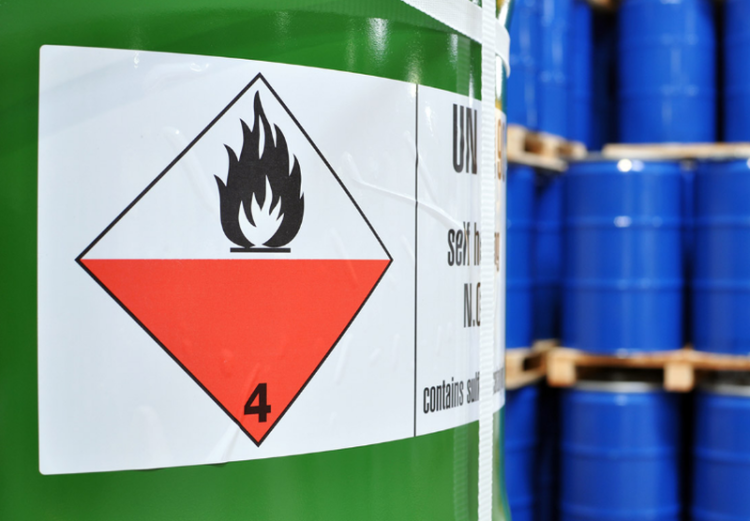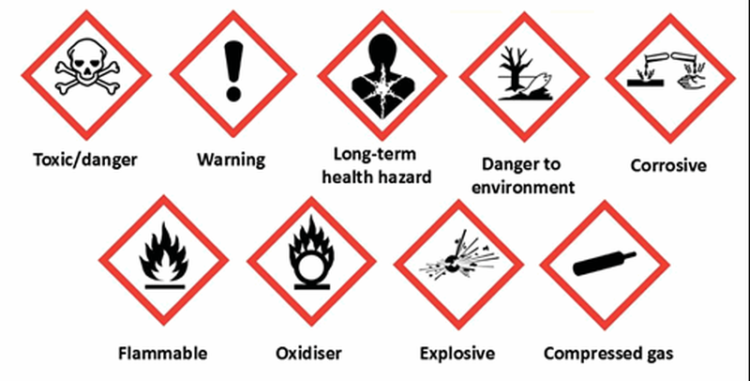The world is definitely a hazardous place. No matter where we go or what we do, there are always risks to our health and safety. We can never mitigate all those risks. The best we can hope for is to mitigate as many as possible and take our chances with the rest. Certain kinds of employers find themselves in such a position every single day.
A big area of concern for many employers is worker exposure to hazardous substances. The term ‘hazardous substance’ is very broad. How it is defined depends on the regulations in a given country. Here in the UK, a hazardous material is any material that can damage the lungs, skin, nose, mouth, eyes, internal organs, central nervous system, and even the genes.
There are far too many recognised hazardous substances to list them all here. This is one of the problems that employers face. There are just so many hazardous substances that it can be hard for employers to keep up. That is why government regulators develop rules and guidelines for protecting workers.
Page Contents
1. COSHH Regulations in the UK

source:britsafe.org
UK employers are required to manage the risk associated with hazardous substance exposure according to the COSHH guidelines. What does COSHH stand for? It stands for ‘control of substances hazardous to health’. You can visit seton.co.uk for a comprehensive guide. COSHH regulations have been in place for the better part of 25 years. Moreover, the regulations take employer responsibility very seriously.
It only takes one violation of the regulations to bring down the government hammer. Furthermore, COSHH regulations are among the rare few that allow for unlimited financial penalties against violators. Run afoul of even one rule and a company could face complete financial ruin. It is that serious.
The truth is that millions of people work in environments in which hazardous substances are part of the daily routine. In some cases, the risks to workers are obvious. Take woodworking and plastics factories, for example. Hazardous substances in these environments are easily identified.
There are other environments in which hazardous substances are not so easy to see. Food service and automotive repair are just two examples. Yet regardless of how obvious hazardous substances may or may not be, employers have a responsibility to protect their workers.
2. Information and Training

source:britsafe.org
Protecting employees starts with information and training. In short, employers in the UK are required to be upfront and transparent about any and all hazardous substances workers might be exposed to. Workers need to know what hazardous substances are in their midst. Employers have an obligation to make them aware of those substances.
Training goes beyond the mere passing out of information. It also takes many different forms. Those workers directly exposed to hazardous substances must be trained in the proper use of safety equipment. They must be trained in the proper techniques for handling hazardous substances.
Other workers may not be directly exposed to hazardous substances, but they are also trained in how to respond in the event of accidents. They must be trained in evacuation procedures, first aid, and so forth. They must also be trained in strategies for protecting themselves, should doing so ever become necessary. Click here to find out where you can take first aid and CPR courses online.
Fortunately, COSHH training courses are available throughout the UK. Such courses are readily available to the extent that employers really have no excuse to not be up to speed on COSHH standards at all times.
3. Regular Safety Reminders

source:britsafe.org
Supplying information and training employees provides a really good foundation for keeping workers safe. However, one-off training is not going to be enough in some workplaces. Neither is handing safety literature to new employees at the time of hire and then not following up with them. Some environments are hazardous enough to call for regular safety reminders. These reminders are necessary to fill the gaps in between training sessions and literature handouts.
As important as safety is, it is easy to forget when workers fall into a routine. If left unchecked, the daily routine mindset can lead to, among others, carelessness and unwise decisions. The whole point of regular safety reminders is to prevent such things from happening. Therefore, regularly reminding employees of safety keeps them thinking about it.
The requirement for signage around hazardous zones is based on the principle of providing regular reminders. Constant reminders of the fact that hazardous substances exist reduce the chances that employees will get careless or forgetful. Signage can be complemented with all sorts of additional reminders from daily safety meetings to routine inspections.
4. Recognising COSHH Symbols

source:britsafe.org
Regulators have developed a set of symbols that are used to identify nine distinct types of hazardous substances. These symbols must be used to mark hazardous conditions by placing them in and around areas where such conditions exist. The symbols are often applied to tools and equipment as well.
The symbols identify:
- toxic/dangerous substances
- long-term health hazards
- substances dangerous to the environment
- corrosive substances
- flammable substances
- oxidisers
- explosive materials
- compressed gas
- substances requiring a general warning.
Recognition of the symbols is an important part of safety. As such, employers must train their workers in symbol identification where applicable. Obviously, workers whose daily environments do not include any hazardous substances don’t need to know the symbols.
5. COSHH Risk Assessments

One last thing to note is that employers in the UK are required to conduct regular COSHH risk assessments if hazardous substances exist on their premises. A COSHH risk assessment is very similar to a fire risk assessment since it is designed to identify potential risks, identify those workers most at risk, and lead to the development of official policies to mitigate risks as much as possible.
There is more to hazardous substances and COSHH than has been detailed in this post. The question to ask yourself is this: how does your employer manage exposure to hazardous substances? If you work in the UK, your employer must follow the rules established by the COSHH regulations. If you are employed elsewhere, whatever regulations have been developed for your jurisdiction are in play.





